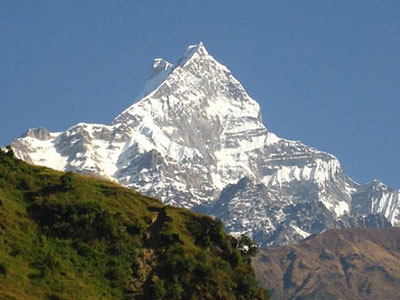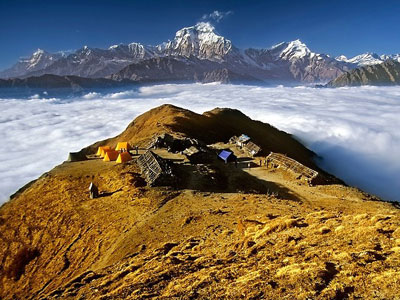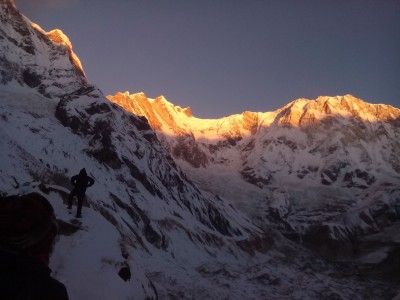Itinerary
Arrive in Kathmandu where you will be greeted by our staff at the arrival of Tribhuwan international airport. You will be transferred to the hotel so you can take some rest. In the evening, you will be warmly greeted by our welcome dinner at your convenient time which depends upon your arrival time today or tomorrow at a restaurant of your choice or any of our home.
After having a delightful breakfast at the hotel, we will take this day to go around the historical town of Kathmandu for some sightseeing. The sightseeing tour will take you to some of the ancient temples and historical places of great religious and spiritual importance for both the Hindu & Buddhist religion. We will start the sightseeing tour in our private vehicle with a member of our staff for guiding you through the whole sightseeing tour. We will start our Tour with the great Hindu Temple Pashupatinath.
Pashupatinath: Situated 5 kilometers east of Kathmandu City, Pashupatinath temple is one of the holiest temples dedicated to Lord Shiva. Situated amidst a lush green natural setting on the bank of the sacred Bagmati river, the temple built in pagoda style has jilted roof and richly carved silver doors. Visitors will be permitted to view the temple from the east bank of Bagmati River, entrance in the temple being strictly forbidden to all non-Hindus any foreigners expect Hindu Indian. Pashupatinath is the centre of annual pilgrimage on the day of shivaratri which falls in the month of February/March. Behind the temple are the cremation grounds. After Pashupatinath we head towards Boudhanath, another magnificent pagoda style Buddhist stupa famous for its nickname “The little Tibet”.
Boudhanath: This Stupa, 8 kilometers east of Kathmandu City, is one of the biggest in the world of its kind. It stands with four pairs of eyes in the four cardinal direction keeping watch for righteous behavior and human prosperity. This Buddhist Stupa was built by King Man Deva at the advice of the Goddess Mani Jogini. It is built on an octagonal base inset with prayer wheels. The shrine is ringed by houses of Lamas or Buddhist priest. After finishing the tour around Boudhanath we head towards Kathmandu Durbar Square, another small site also listed on the UNESCO world heritage site for its great religious importance.
Kathmandu Durbar Square: Kathmandu Durbar Square is one of the major attractions in Kathmandu Valley. The word Durbar Square translated in English as Palace Complex. The Durbar Square, with its old temples and palaces, epitomizes the religious and cultural life of the people. Interesting things to see here are:- Kumari (The Living Goddess) Gar, At the West end of the square, is a beautiful house full of woodcarving of different God and Goddesses. This Palace is three storied and in this palace, lives the very famous living Goddess Kumari. Both Hindus and Buddhists equally venerate her. For Hindus she is the reincarnation of Hindu Goddess Kali. She is equally worshiped by Buddhists because she is chosen from Buddhist family. This shows the harmony between Buddhist and Hindus in Nepal.
Maru Ganesh: Small yet the most visited temple of Kathmandu is Maru Ganesh. The people of Kathmandu valley believe that the four Ganesh in four corners of Kathmandu valley protect the peoples living in Kathmandu. Every day people go to worship this temple and especially on Tuesdays one can see a long queue of people waiting for hours to worship. Tuesday is considered the day of Ganesh. After concluding the tour around Kathmandu Durbar Square we will head towards Swayambhunath nicknamed the “Monkey Temple”. The Buddhist stupa holds some great artistic and magnificent small Buddhist monasteries where you will witness some great Buddhist culture and tradition.
Swayambhunath: Swayambhunath is located approximately 4 kilometers and this Buddhist Stupa is said to be 2000 years old. The Stupa which forms the main structure is composed of a solid hemisphere of brick and earth supporting a lofty conical spire capped by a pinnacle of copper gilt. Painted on the four sided base of the spire are the all-seeing eyes of Lord Buddha. This hill is a mosaic of small Chaityas and Pagoda temples. After visiting these magnificent places we conclude for the day and return back to the hotel for some rest. Stay overnight in Hotel.
Drive from Kathmandu to Pokhara (914m.) which takes about six hours. You depart for the six hours drive to Pokhara (915m,), 200 kilometers west of Kathmandu. As you climb out of the Kathmandu valley, only to quickly descend again to the Trisuli River, you follow upstream to its junction with the Marsyangdi River. You follow the Marsyandi gently up through heavily terraced fields and small hill towns to the Seti River that takes you directly into Pokhara. Having pleasant weather, Pokhara is tourist’s paradise with full of natural as well as cultural heritage sites such as lakes, caves, temples of Buddhist and Hindus along with mountains. You can observe views to the north across the hills and Phewa Tal (lake) to the white peaks of the Annapurna and Dhaulagiri ranges. This drive will take most of the morning, leaving much of the afternoon to fall in love with its beauty. You can also fly from Kathmandu to Pokhara which takes about 25 minutes.
Drive from Pokhara (915 m.) to Nayapul (1050m.) by car, which takes approximately one and half hours drive. Now you begin your trek from Nayapul (1050m.) to Tirkhedhunga (1577 m.) via Birethanti (1065m.) which takes about four and half hours.
After breakfast at hotel, you could drive for 1 and half hours to Nayapul. Then you start your trekking. The first part of your trek is easy passing through numerous small villages and settlements. Afterwards you could ascend gently to the final destination of the day. The majority people here are Gurung and their religion is Buddhist. They are engaged in agricultural activities, tourism business and some are employed in Gorkha and Indian regiments.
Trek from Tirkhedhunga to Ghorepani (2675 m.) and it takes about six hours. To begin your trek, you could ascend steeply for the early 2 hours and then ascend gently passing through Ulleri (2070m.) and Banthanti, Magar villages. On the way, you could see good view of Machhapuchhare or Fish Tail (6997m.), Hiunchuli (6441m.), and Annapurna (7219m) south. Now your trail is quite easier passing through rhododendron and shadowy trees and descends gently up to the final camp. You could see some of the wild life such as monkey and various species of birds.
Trek from Ghandruk to Chhomrong (2040 m.) which takes approximately four hours. At the beginning of the day, you could ascend gently for an hour up to Ghandrukkot (2100m.) and descend steeply to the Kimron Khola (1700m.). Immediately, ascend steeply and walk at a level for an hour and still ascend gently to the final camp. Chhumrung is a gateway to Annapurna Sanctuary trek and inhabited by Gurung, one of the major Ethnic group of Nepal.
Trek from Chhomrong to Bamboo (2340m.) and it takes about five hours. Leaving Chhomrong, the trail descends on a stone staircase and crosses the Chhomrong Khola on a swaying suspension bridge, then climbs out of the side valley. High above the Modi Khola on its west bank, the trail passes through the tiny settlement of Tilicho in forests of bamboo, rhododendron and oak. Climbing further on a rocky trail (beware of the stinging nettles) you reach three hotels at Sinuwa, at 2350m. Climb in rhododendron forests to Kuldi, at 2520m. This was once a British sheep breeding project; now the stone houses are an ACAP visitor centre and check post. In winter, it’s common to find snow anywhere from this point on. Descend a long, steep stone staircase into deep bamboo and rhododendron forests. It is then a short distance on a muddy trail to Bamboo Lodge (2340m.).
Trek from Bamboo to Deurali (3230m.) which takes about five hours. You trek gently ascend through bamboo forests with varieties of rhododendron and oak trees. The first town you reach is Dovan (2630m.) where there are few lodges and camp sites. Now you pass through muddy trail which traverses high above the river. There are debris of avalanches except during winter season. After short trek, you reach at Himalayan Hotel (2900m.), the town named after the Himalayan Hotel. Beyond it, the trail is steeply ascent up to Hinko Cave (3160m.), this named as a huge overhanging rock provides some protection against rain and avalanches. It takes approximately twenty minutes through normally ascent path to reach Deorali (3230m.)
Trek from Deurali to Annapurna Base Camp (4170 m.) via Machhapuchhare Base Camp (3820m.) and it takes about four hours. From here, the valley widens and becomes less steep and you can see the gates to the sanctuary. The trail is less steep. As the trail continues into the sanctuary, it crosses two avalanche tracks on a narrow trail that hurdles up against the cliffs. After short trek you will be at Bagar (3310m.), a meadow and some abandoned hotels. The normal trail follows the left side of the valley. Now the trail appears gently ascent until you reach Machhapuchhare Base Camp (3820m.). Here you find almost 6 to 7 lodges. This is one of the places, where you can enjoy the view of Mount Hiunchuli (6441m.), Annapurna South (7229m.), Annapurna I (8091m.), Annapurna III (7555m.), Gangapurna (7454m.) and Machhapuchhare or Fish Tail (6997m.). The path follows through alpine meadow and after some distance your trails go gently up. After a short trek, you begin to approach Annapurna Base Camp (4170m.). From here, you can see the views of several peaks at 360 degree.
Trek from Annapurna Base Camp to Dovan (2630m.) which takes about five hours. It’s much easier going down. You should have no problem reaching Sinuwa in a single day from Annapurna Base Camp. Now you trek through Himalayan Hotel to Dovan.
Trek from Dovan to Jhinudanda (1750m.) and it takes about six hours. The path is descent up to Bamboo passing through forests with varieties of rhododendron, oaks and bamboo plants. After Bamboo, the trail goes steeply up to the Kuldi Ghar and now the trail is quite flat until you reach Sinuwa. You trek gradually descend to the Chhumrong Khola and you have to follow stone staircase for almost an hour to reach Chhumrong. The last part of the trail is steeply down to Jhinudanda. From the town you should walk down for 20 minutes to reach Hot Spring at the bank of the Modi Khola. You can relax at Hot Spring.
Trek from Pothana to Dhampus Phedi and it takes approximately three hours and drive from Dhampus Phedi to Pokhara by car. The trail is gently descent up to Dhampus, a village mainly inhabited by Gurung. Now you trek through flat land for some distance and steeply descend to Dhampus Phedi. Now you take vehicle to drive from Dhampus Phedi to Pokhara
Drive from Pokhara to Kathmandu by company vehicle that takes about seven hours. While driving from Pokhara to Kathmandu, you head up to Damauli,, Dumre, Muglin and Kurintar where the Nepal’s first Cable car is operated to reach to Manakamana Temple. En route, you could enjoy the mountain views, green sceneries, rice terrace fields, vegetable fields and people being engaged in their daily life activities. From Naubishe you climb up to Thankot, the gateway to capital city. In the evening you can take a short walk around Thamel if you need to purchase some souvenirs to take back to your country. We will provide you a fully sponsored farewell dinner for your great achievement in successfully completing the Trek at a restaurant of your choice or our home. Stay overnight in hotel
Start the day with a nice breakfast and we will make sure you will get in the right time at the Tribhuwan international airport for your departure. Bid farewell to Nepal & take your flight aboard to your native land.
Inclusions
Cost Includes
- A guide
- Necessary Porters (A porter is provided to two persons, and can carry upto 20 Kilos)
- Entry permits for Annapurna Conservation Area
- Trekkers’ Information Management System (TIMS) card
- Necessary transport
- All meals three times a day (breakfast, lunch and dinner) only for our guides and porters during the trek
- Accommodation in tea houses (lodges) only for our guides and porters during the trek
- Necessary equipment such as sleeping bag, down jacket etc.
- Mountain Medical rescue help (It is provided by your insurance company)
- First aid kits for guide and porters
- Insurance and equipment for the Nepali staffs
- 2 night’s hotel accommodation in Pokhara at lake side
- Airport picks up services
Exclusions
Cost Excludes
- Personal nature expenses such as drinks, beverages, hot shower etc.
- Tips
- Lunch & Dinner cost in Kathmandu, Pokhara.
- All meals three times a day (breakfast, lunch and dinner) for you during the trek
- Accommodation in tea houses (lodges) for you during the trek



